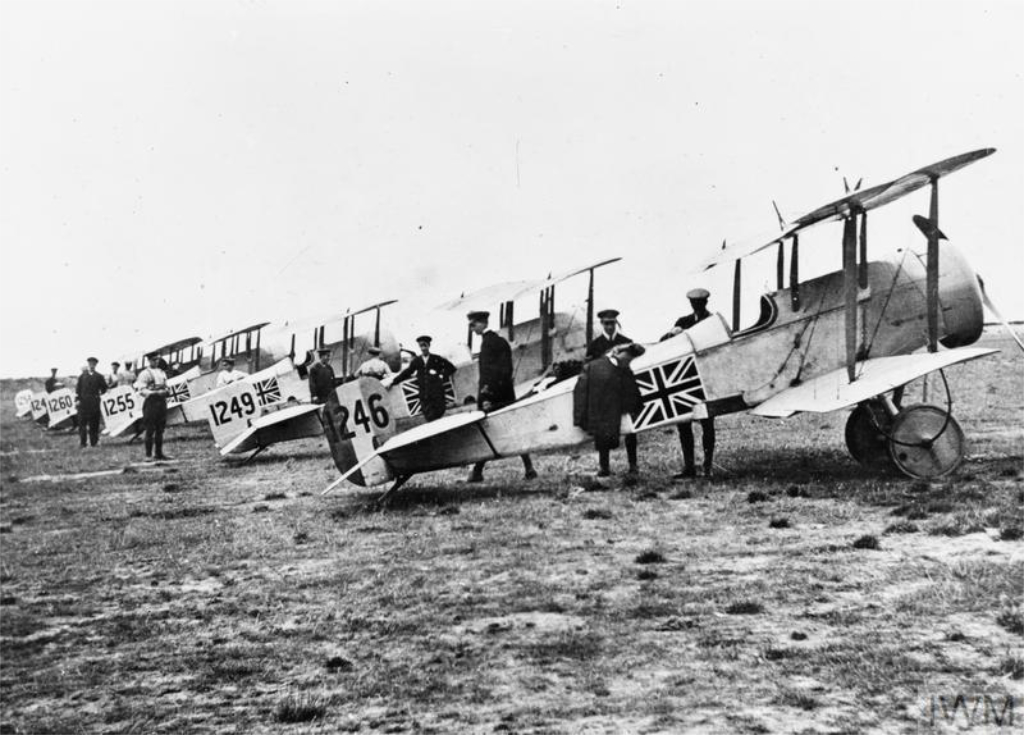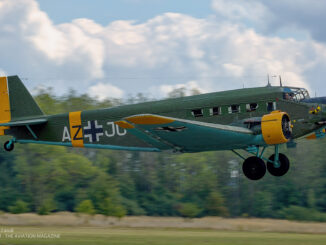 On 3rd November 1915, Flt. Lt. H.F. Towler RNAS, took-off in a Bristol Scout C biplane from the deck of HMS Vindex. It was the first taking-off of a wheeled undercarriage aircraft from a ship in the British history.
On 3rd November 1915, Flt. Lt. H.F. Towler RNAS, took-off in a Bristol Scout C biplane from the deck of HMS Vindex. It was the first taking-off of a wheeled undercarriage aircraft from a ship in the British history.
The idea of using naval vessels for airborne operations is known at least since the beginning of the 19th century. In 1806, the Royal Navy used to launch kites with anti-Napoleonic propaganda leaflets from HMS Pallas frigate. Then, in July of 1849, the Austrian Navy was reported to launch incendiary balloons against Venice, from the deck of SMS Vulcano. And, during the American Civil War, reconnaissance balloons were operating from coal barges.
Only a few years after the first flight of a heavier-than-air aircraft, attempts to perform aeroplane take-off and landing operations from a ship deck were performed. The first successful take-off from a vessel – although anchored in a harbour – was dated November of 1910.
On 14th November of that year, Eugene Burton Ely took-off in a Curtis Pusher aeroplane from a platform mounted on the deck of the USS Birmingham light cruiser. The 83-foot-long platform turned out to be a bit too short for that operation. The Curtis Pusher dived down immediately after clearing the improvised runway and its undercarriage dipped into the water. Fortunately, Ely managed to ascend from the water and then landed on the shore nearby.
In January of 1911, Eugene Ely repeated his stunt, this time using a platform mounted on a deck of the USS Pennsylvania cruiser. This time, however, he made the first successful shipboard landing of a heavier-than-air aircraft, then turned the aeroplane and took-off without any major issues.
In December of 1911, the first dedicated aircraft carrier was launched. The ship, named Foudre, was built for the French Navy and was a seaplane carrier. She was able to carry up to four seaplanes of Voisin Canard type.
On 10th January 1912, Charles Rumney Samson became the first British pilot to take-off from a ship, using a ramp mounted on the deck of the HMS Africa battleship. In May of the same year, he became the first pilot in history to perform a successful take-off from a moving ship, the battleship HMS Hibernia. In both cases, Samson flew a Short Improved S.77 biplane.

All the aforementioned attempts were significant milestones in naval aviation history and led to creation of a classic aircraft carrier, equipped with a full-scale, fixed deck for take-off and landing operations.
Nevertheless, before it happened, possibility of using a classic, land-based aircraft with an ordinary wheeled undercarriage, had to be proved manageable and practical. Aeroplanes used in the early attempts were all of simple design and used wheels mounted on an axle attached to the skids.
At the end of 1915, the Royal Navy began preparations for launching combat aircraft from a ship deck. The choice fell on Bristol Scout, fast and light aeroplane used by the Royal Naval Air Service for reconnaissance purposes.
The chosen aircraft, Scout C with serial number 1255, was sent to RNAS Eastchurch station, where the flying deck of the HMS Vindex carrier was mapped to add realism during the flight trials. Then, on 3rd November 1915, Flying Lieutenant Harold Frederick Towler, performed the successful take-off from the foredeck of the Vindex.
It was recorded that, at the time of the take-off, the Vindex was steaming at 12 knots (22 kph), and there was a steady breeze. After clearing the deck, Towler headed his aircraft to Great Yarmouth, where he successfully landed shortly after.
HMS Vindex was launched in 1905, as the passenger steamer SS Viking. She was the first steam turbine-driven vessel built by Armstrong Whitworth Walker Shipyard and, at the time of its construction, aroused great interest. The local press described the ship as ´the finest steamer´ ever build by the Armstrong Whitworth company.
On 23rd March 1915, the Viking was requisitioned by the Admirality for the war effort. At the end of that year, the vessel was bought out by the Royal Navy and re-named HMS Vindex. Then, she was converted into a seaplane carrier.
In conclusion, it is important to mention about the Fl. Lt. Towler and to clear some issues with his name. There are many publications that mention ´B.F. Flowler´ as the pilot who performed the abovementioned take-off from the HMS Vindex. Nevertheless, the British National Archives clearly indicate H.F. Towler, born on 15th August 1890, as the Naval Air Officer and the airman who served with the RNAS during the Great War.

Cover photo: Fl. Lt. Towler makes the first take-off from a carrier ship HMS Vindex (© IWM Q 73743). All IWM photos used under the IWM Non-Commercial Licence.



